
It's always good when a project is finished; even better when it's a success, better yet when it's never been done before and the top when someone almost inevitably says: "You can't do that!"
The bonus prize is doing it under severe adversity and not caving. Kinda like beating yourself in the head with a ball peen hammer, 'cuz it feels so good when you stop.Orrery? Orrery? ... Beueller? Beueller?
What's an orrery, you ask? Well, it's a model... of something really big. Stick around and you'll learn how big. We're Artist-Engineers. We build cool stuff. The big commissions are designing and building things that have never been attempted before by anyone. We're Renaissance people. Anytime Science, Art and Engineering can come together it's a beautiful thing. It's what we do and I guess we do it well 'cuz we keep getting asked to do more. The Good News is, they're interesting as hell and boredom is not an occupational hazard. (Scared out of our wits sometimes is.) The Not So Good News (although it does make it more fun and a definite accomplishment) is, each commission is a total start from scratch. No manuals. No cookbooks. No textbooks. (The only books we get are ones thrown at us.) No YouTube videos. No calling on the phone to ask what to do next or if Tab A goes into Slot B and, usually, no direct parallel to anything we've already built, let alone anyone else. The Bad News is, well, there is no Bad News—other than that these take so long, by the time this one is finished we're right into the next with no time to take a deep breath.Attitude. We've got it.
My partner in crime in all these endeavors is Joy Alyssa Day, whose favorite line when we get one of these is: "How hard can it be?" About 710 on the Brinell Scale would be my estimate. Translation: Darn Hard. We jump right in anyway—face first.
Developmental projects don't run on a schedule. Breakthroughs come in their own time. You've heard the phrase:"You can't rush art"? You can't rush invention either. Many people don&'t understand this. Of course, they've also never tried doing it. "Looks simple enough. Why aren't you done?" All I can say to that is what we say at Penske Racing: "We make the difficult look easy; the impossible takes a little longer." Heck, if it were easy, everyone would be doing it! The Celestial Gears Blown Glass Orrery project has been in the studio for quite a while—longer than most. Partly due to the uniqueness, partly due to the degree of difficulty but more to do with our having a front row seat working in 110° poison oak laden smoke for two and a half months with a California wildfire—that burned 243 square miles of forest—bearing down on our mountain top studio threatening our lives and livelihood, designing and building a self-contained 11,000 gallon fire fighting system so that wouldn't happen, the economy tanking during all of that; compounded by a middle manager who juuuust didn't get the above and decided it would be a really good idea to not fund the construction phase of their own project, in order to "speed us up". Not exactly what one would call having a grip on reality. We persevered in the face of all that and Joy deserves a medal (or at least a five gallon pail of hot cocoa) for all that she did through so many months. It took a lot longer than we would have liked and isn't quite as cool as it could have been, had the proper support from the client been tendered. Still way cool, though. Waddyathink?Installed at the College of San Mateo, California Planetarium, it's a working Solar System. It very accurately moves the planets at proper speeds 50,000x actual velocity. No, it's not to scale. You'd be surprised how many times we get that. Even with the huge mobiles mentioned farther down, if correct scale were employed, there really wouldn't be a lot to look at.
With a Sun this size, Mercury would be a smoke particle having trouble clearing the walls, Earth would be a dust mote hovering out in the parking lot and Neptune would be a mustard seed the next town over. Pretty boring, really difficult to build and few would want to take the time to go see it all—even if you knew where everyone was—so we have to adopt relative scale between the gas giants and rocky planets and both of those groups to the Sun. It's a hack but it works. We're cramming an entire Solar System into six feet; something's got to give!We Like Exotic. (What's not to like?)
All of the planets and Sun are blown glass riding on arms of carbon fiber (that's right—expensive carbon fiber—we aren't messin' around, here) that extend as much as three feet from a '50s era Steampunk rocket. Joy turned the rocket from a block of solid fine grain cherry wood on her lathe that lives on the west deck. It even has little art glass dome windows color coordinated to the planet riding on each rotating segment.Carbon Fiber? Are ya kiddin' me?
Why? Well, it's light and extremely rigid. I built Indy cars and Can-Am cars with it. Aircraft and spacecraft are made out of it. Yes it's expensive (but then so am I), and it looks really cool! (Better than I do, but that's not a stretch.) Did I mention it's expensive? We first employed it in our Celestial Winds Blown Glass Solar System Mobile. At twenty-four and forty foot diameters (7.3m and12.2m respectively), we needed spars that were strong and extremely light, such that the air currents could move the planets around. They are made out of blown glass, so we're giving away a lot in mass. Gotta get it back somehow. Learning curve! Now, we mold our own components right here on the ranch whenever we need them and can get them just the way we want as many times as it takes.Cast Glass... Why not?
The rocket rises above twelve wedge shaped plates of cast crystal, each 1/2" thick creating a contiguous surface six feet in diameter, representing a core slice through an icy comet nucleus; the oldest objects in the Solar System that populate the Oort Cloud, periodically falling inward to visit the Sun and display their wispy tails. The center portion has colors of crystal molded within to represent nebulae and the radiating segments and moving colors form the forceful exhaust blast from the rocket engine as it lifts off. Even though each ice plate was cast individually, when all are assembled onto the base the resulting surface is remarkably uniform in thickness. Not easy; nor was developing the kiln temperature ramp to cast a plate of this size, thickness and shape. Many cracked and had to be recast until she got the heat right. Once that phase was done, she core drilled them to accept the cap screws that hold them in place. The underside is textured to look like ice, with its impurities, surface fractures and trapped bubbles, while the top side is as it was at greater than 2,000° in the kiln; the surface literally frozen in that state for you to gaze upon without destroying your eyes from the radiation. At that temperature, it is bright fluorescent orange. Beautiful to look at but you can't do it for long.Beautiful Woods - A Counterpoint to the Glass and Carbon
The base, constructed of solid cherry, is in the form of a mariner's compass rose. A compass and the stars are all that is needed to navigate the globe. It stands upon eight globe feet and the turned columns flank eight panels, each having data about one of the planets and its relationship to Earth.The Crystal Zodiac Ice Plates
The twelve cast crystal Zodiac Ice Plates mentioned above each carry a sign of the Zodiac, complete with Ecliptic and 1st and 2nd magnitude stars that anchor the asterism drawings etched into the under side. They are held in place by nice large black oxide hex socket button head cap screws, furthering the Steampunk flavor. The planets revolve through these constellations just as they do "out there", so the stars of the seasons can be easily taught. The plane of the Solar System is pretty much at eye level parallel with the Zodiac Ice Plates, so that it is easy to visualize the positions of the planets against each other and the background stars from the vantage point of Earth. Still, a view from above the Ecliptic is always a treat and really difficult (and expensive) to do for real. That's where a good model comes in handy.The Music of the Spheres
Look closely and you can see that Earth also has our Moon as a companion. The tiny Moon's position can be adjusted to teach eclipses. The Sun was specially blown to be partially transparent in the lighter areas of its mottled pattern, so that it will light the planets as the real Sun does; creating terminators and sending their planetary shadows off into space. These can be seen in the wonderful nebula that is cast upon the walls surrounding the orrery by the Sun.
All of the planets are faithfully represented with an artistic flair. Mercury has bleached craters, Venus has its subtle white cloud cover, Earth has its characteristic clouds and polar caps, Mars has its valleys, mountains and polar caps too, Jupiter its Red Spot and linear clouds, Saturn its rings and a few small storms represented by bubbles in the glass, Uranus has its rings, too, and Neptune its wispy white clouds and Blue Spot. Mercury completes one orbit in 2.5335 minutes, Earth in 10.5194 minutes and stately ol' Neptune clocks in at 1.2038 days! He's quite the creation and, despite the difficulties from various sources along the way, we truly love our latest "child" and will miss him. He's been here in various stages of growth for so long we're experiencing "empty nest" syndrome. That is one reason why we'll probably build another. The other reason is that it is just darn cool to watch the silky smooth procession glide 'round and 'round... and dream. We're also thinking about building a scale model of the model. Did that for one of our large awards—in the same order. Built the big one first and the model after. Guess we're in a reverse rut.3D - I did say we do a lot of Cool Stuff
Speaking of models, we've come full circle back to the start. The Blown Glass Orrery began with a full digital 3D model, right down to the last bolt—and it works! We begin all of our major commissions this way. Helps to fully flesh out the design where it is a magnitude or two easier to make changes—before it's built. They don't call it hardware for nothing. The design can go a lot farther into the unknown and less traveled roads this way. You can go in there, drive around and look at everything in great detail to see that it's all as it should be. Then start cutting metal. Most projects are designed for the way they look first and we determine how to fit what we need in there with the high fidelity model to work with. When it comes time for the construction phase, we have already "built" it, so there are as few surprises as possible. We know that everything is going to fit and, more importantly, why.Like it? Hate it? Want one? Got an idea on what we should do next? Please leave a response. We'd love to hear your thoughts and open a dialogue.
Tags: 3D model, art and science, art glass, astronomy, carbon fiber, engineering, glassblowing, space, wood carving, woodworking
Short URL for this post: //spherical.org/s/v




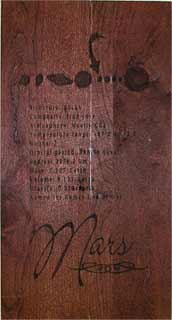
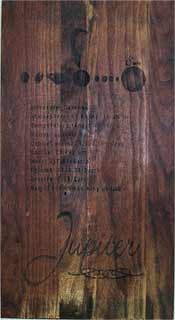
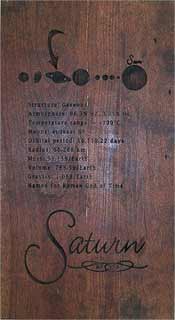
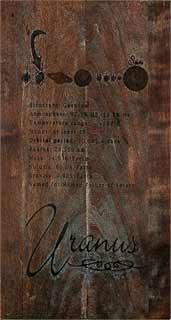
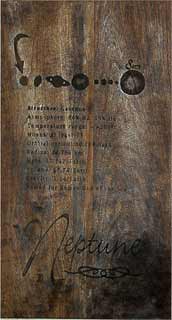
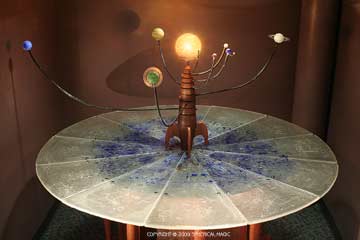


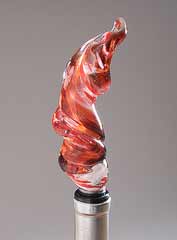
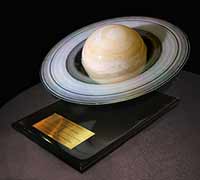
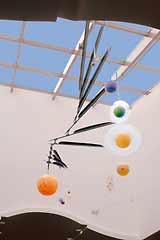
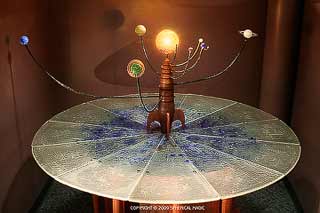
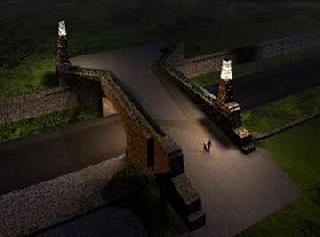
 RSS - Posts
RSS - Posts